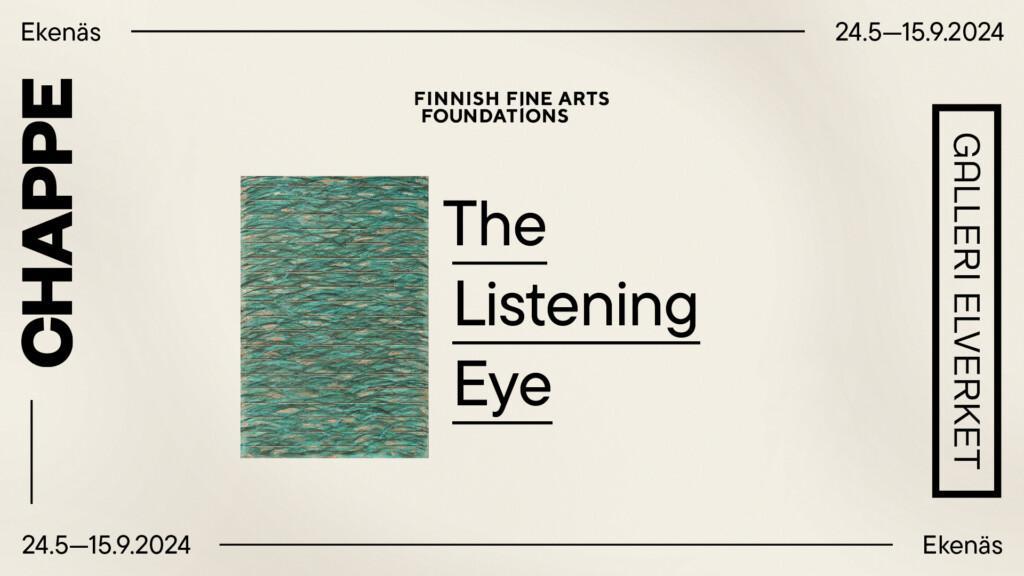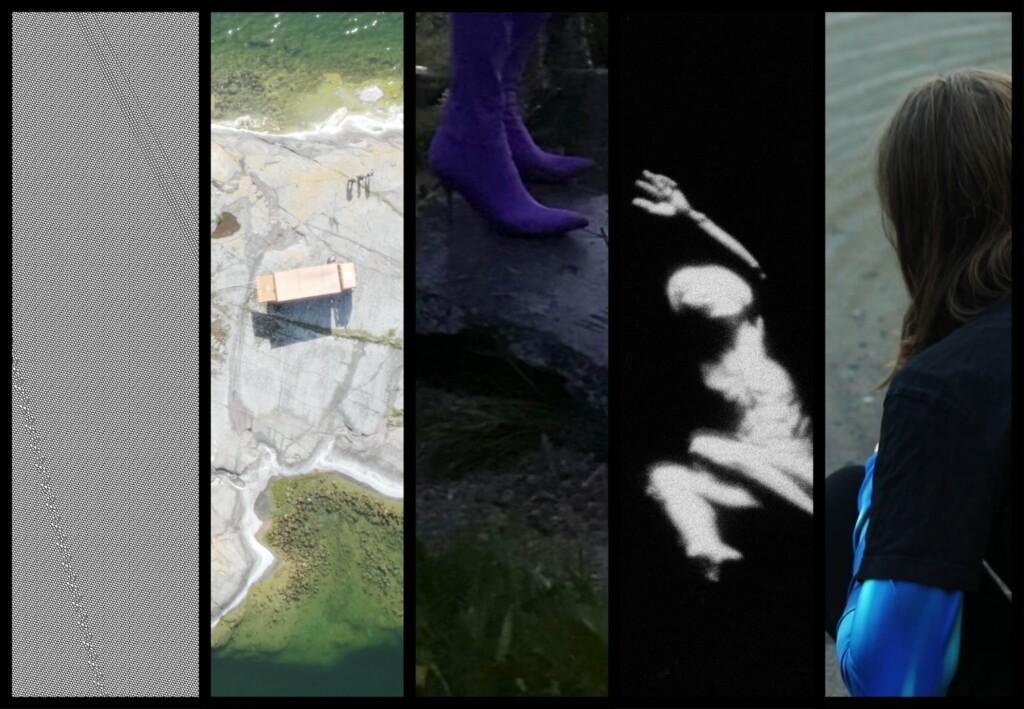
Loving women from the 19th century to today
The theme of Gallery Elverket’s current exhibition is love between women. Finland is one of the few countries where both male and female homosexuality were illegal and punishable offences (from 1894 until 1971). This exhibition celebrates the decriminalization of homosexuality in 1971, but it also reminds us that, even today, the spectrum of sexualities and genders is still a target of prejudice and discrimination. Many publications and exhibitions dealing with the history of homosexuality have paid less attention to love between women than to that between men. Loving Women is based on the work of five artists and takes us on a journey into love between women and the various forms that it takes.
The timeline of the artworks in the exhibition extends from the 1890s up to the present, with both historical works and some made especially for Elverket. The exhibition shows how various phenomena related to genders and sexuality have been dealt with in different ways and how a diverse set of images is revealed to the viewer. At the same time, it is an attempt to draw a picture that runs counter to classifications and definitions of identities and sexualities. That is to say, to show how art, for example, can deal with different identities freely without resorting to definitions.
Loving Women also seeks to present both historical and current ways of treating being a woman and femininity as a realm that does not constantly have to be defined with reference to masculinity. The images and works here demonstrate how broad the scope of the feminine is, and how its various representations escape definition, while also creating new realities.
The photographs by the Norwegian photographer Marie Høeg (1866–1949) show a play with identities, along with crossdressing and other phenomena that carnivalize gender. The correspondence of the Finnish painter Ester Helenius (1879–1955) was traditionally viewed as reflecting heterosexual love, but Professor of Art History Tutta Palin’s recent publications show how Helenius conducted loving exchanges of letters with other women. Her flower paintings combine the sensual and the supersensory in a unique way. From Tove Jansson (1914–2001) here are various self-portraits and other autofictional material, in which relationships between women and diverse identities occupy a central place. Emma Helle (1979) is known as a versatile sculptor, in whose sculptures the feminine body is pivotal, and is treated as a fascinating, dramatic subject. The sculptures celebrate femininity in variations on 1970s feminist discourse. The visual artist Edith Hammar’s (1992) paintings on the gallery’s walls shed light on queer and non-normative identities. Hammar, who studied in Stockholm, draws directly onto the wall, making works that bring both narrativity and play with identity into the exhibition.
Taken together these works reveal how norms can be broken down in various ways, and how the diversity of identities is visible at the end of the 19th century, in 20th-century modernism, and in contemporary art. The language of flowers, carnivalism, everyday life, queer studies and the political nature of the personal are all terms that could be used to describe the works on display. The exhibition does not seek to represent the entire spectrum of love between women, but aims to highlight its historical strata and various nuances, which still exist in our time.
Juha-Heikki Tihinen, PhD
Illustration by Edith Hammar.
The Helsinki-born Edith Hammar (1992) studied in Stockholm, initially at the Gerlesborg School of Fine Art and Royal Academy of Fine Arts in 2014–2017. Hammar works in a variety of ways as an artist and published their first comic book, Homo Line, in 2020. This attracted a lot of interest, as it deals insightfully with both the feelings of someone with a Finnish-Swedish background in Sweden and with the life and experiences of a young adult in both their new and old home countries. Hammar’s drawing style is easily recognizable and distinctive, for example, in Homo Line, the artist carries on a perceptive dialogue with Tom of Finland and his legacy. Hammar’s queer figures live out their adventures in both comic strips and wall drawings, reshaping our conceptions of identities, bodies, sexualities and genders. Hammar’s production demonstrates how differently we experience a drawing in a comic strip and on a gallery wall, even though it is obvious that the same artist has created both visual realities.
Ester Helenius (1875–1955) was a Finnish-Swedish painter, who studied at the Finnish Art Society Drawing School in 1892–1898. Helenius spent a lot of time in Paris and also held exhibitions there. Her works represent French colour painting and she gained plentiful recognition during her career. She was appointed an honorary member of the Artists’ Association of Finland in 1944. Helenius was interested in mysticism and theosophy, which is reflected in her works, for example, in the androgynous human figures. In her paintings she depicted female masculinity and feminine young men. In recent years, Professor of Art History Tutta Palin has published numerous pieces of research on Helenius, which also shed light on her relationships with women and on the way that she redefined identities and their representations in her art. Helenius’ flower paintings exist as if on the borders of two worlds, since they present both material sensuality and mystical immateriality in an intriguing way.
Emma Helle (1979) is a Finnish visual artist who studied at the Academy of Fine Arts, Helsinki, in 1999–2007, graduating with an MA in Fine Arts. Helle is a sculptor, her primary materials being ceramic and wood. Her works reveal material insights, a profound knowledge of art history and a carnivalistic corporeality. She may, for example, take ideas for a work from porcelain figures, creating her own sensual, materially sumptuous versions. In her art Helle works on the human figure in various ways, the sculptures displaying the full spectrum of physicality. The female body, in particular, appears in diverse forms, depicted playfully and sensually. Helle frequently creates installations that turn our traditional ideas about sculpture on their head, for example, mixing art-history references with garden allusions to form elegant entities that combine humour, a broad knowledge of tradition, and contemporary art’s play with identity.
Marie Høeg (1866–1949) was a Norwegian photographer, who lived and worked in Hanko and Tammisaari in 1888–1895. She was the first person to work as a professional photographer in both localities. After moving back to Norway, Høeg met her life partner Bolette Berg (1872–1944) and they set up a joint photography studio in 1895, initially in Horten and from 1903 onwards in Oslo. Besides photography they also published books of photographs. Both Berg and Høeg were photographers and women’s movement activists. Høeg’s glass negatives were found in the 1980s, since when they have been shown in numerous exhibitions. In her pictures we see play with identities and, for example, crossdressing. She can also replace the main character of a typical picture of a man with a woman, and in so doing create a new interpretation in place of a gender stereotype. These pictures play with representations and demonstrate how reflections on identities and sexualities were already a part of people’s lives at the end of the 19th century.
Tove Jansson (1914–2001), a multi-artist born into an artist family, studied at the Konstfack (University of Arts, Crafts and Design) in Stockholm in 1930–1933, after which she returned to Helsinki and studied at the Finnish Art Society Drawing School in 1933–1935. Jansson is one of the internationally best-known Finnish artists, whose Moomin books and comic strips have been translated into dozens of different languages. She saw herself more as a painter than as a writer, and made a lot of monumental paintings. She also worked as a cartoonist and illustrator, and carried out a lot of different Moomin-related projects. Jansson’s literary production contains a highly multifaceted play with identity, added to which her “adult books” contain a lot of character that dismantle norms. She wove autobiographical ingredients into her own works and, for example, the models for Jonna and Mari – the main characters in Fair Play (1989) – are easily recognized as Jansson and her long-term life partner, graphic artist Tuulikki Pietilä (1917–2009). Pietilä was also the model for Too-Ticky in Moominland Midwinter.

Current exhibitions
Elverket
Opening hours
Tue 11–17
Wed 11–20
Thu–Sun 11–17
Mon closed
Sinne
Opening hours
Tue–Sun 12–17
Mon closed


